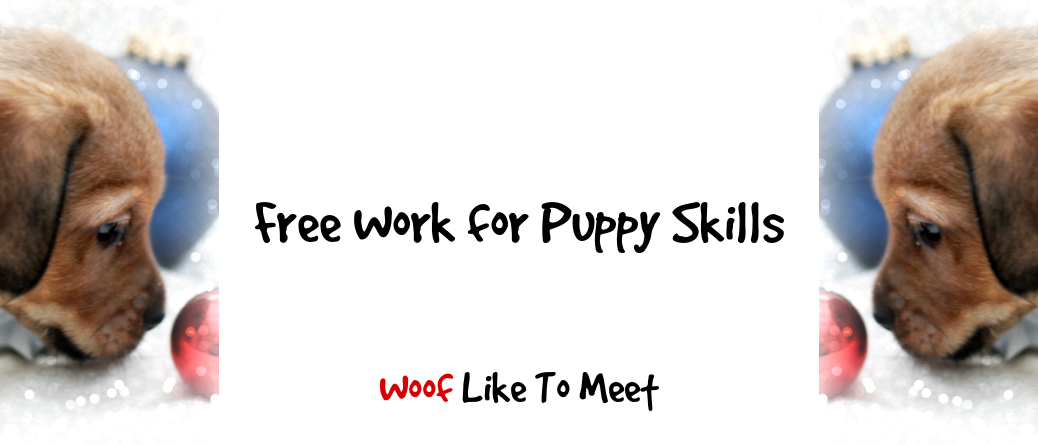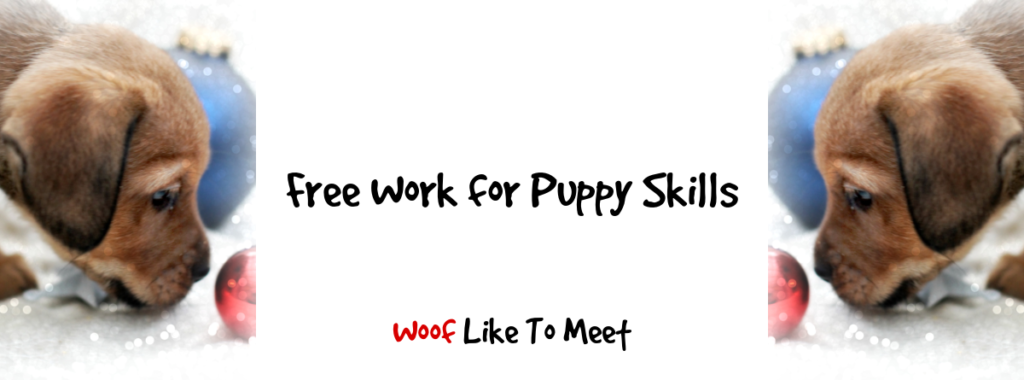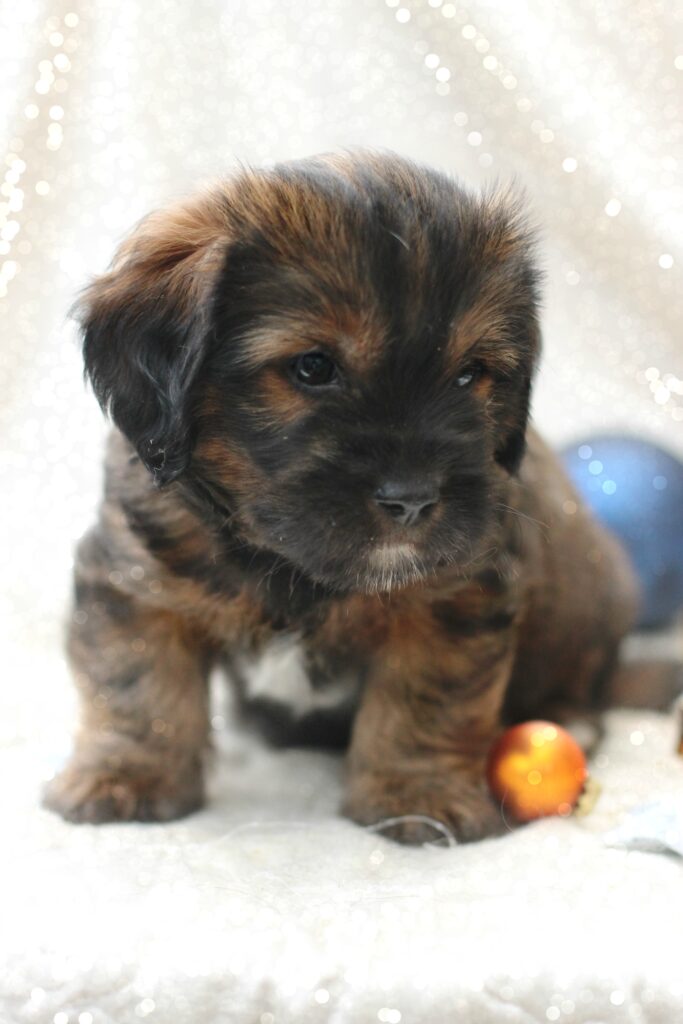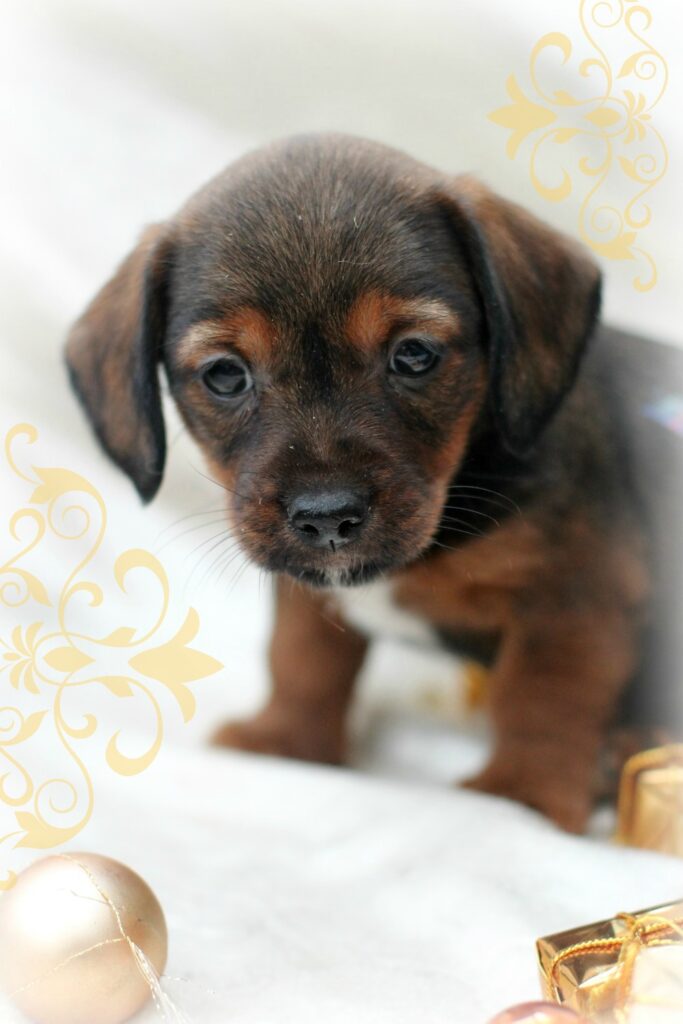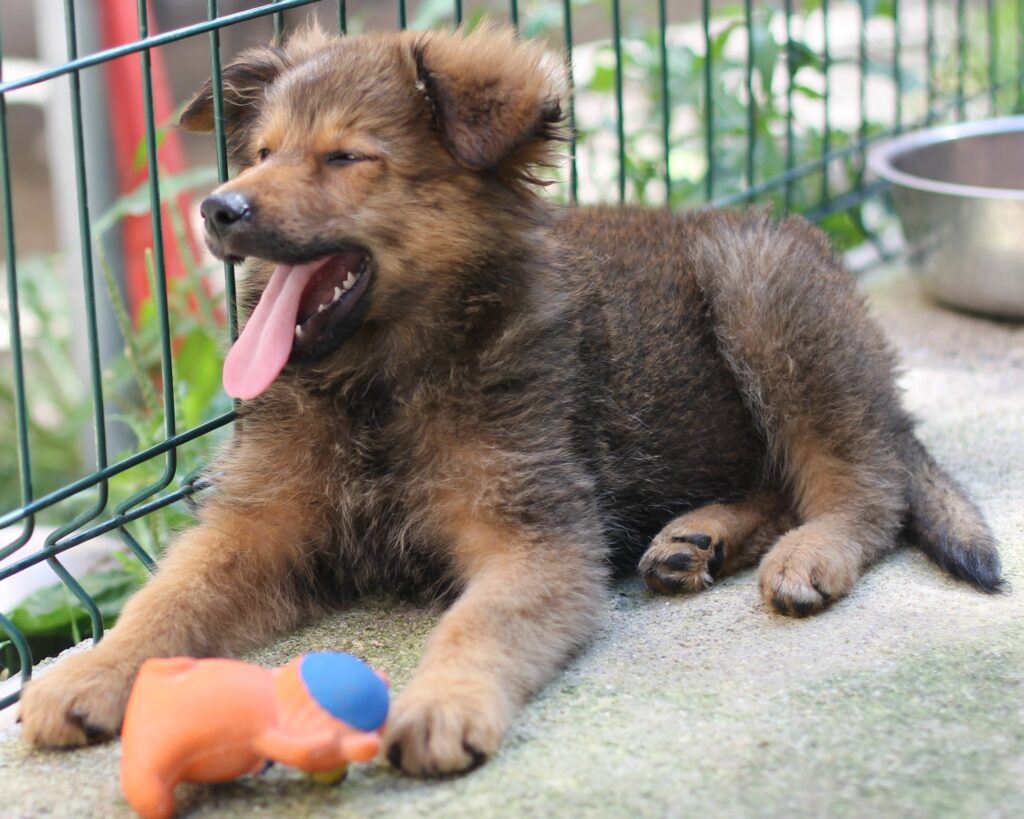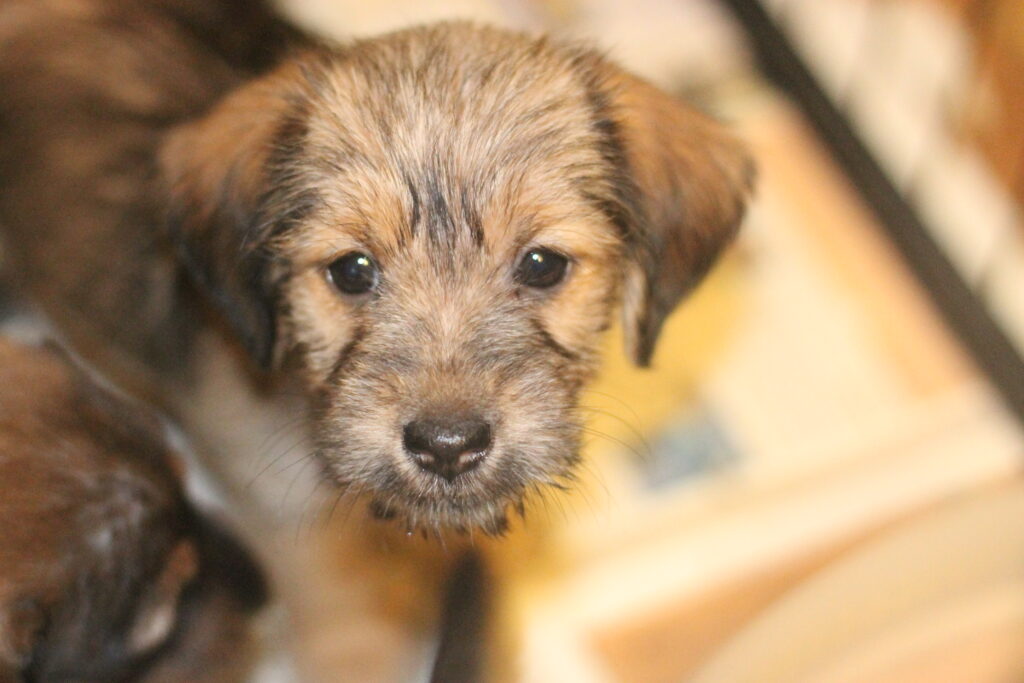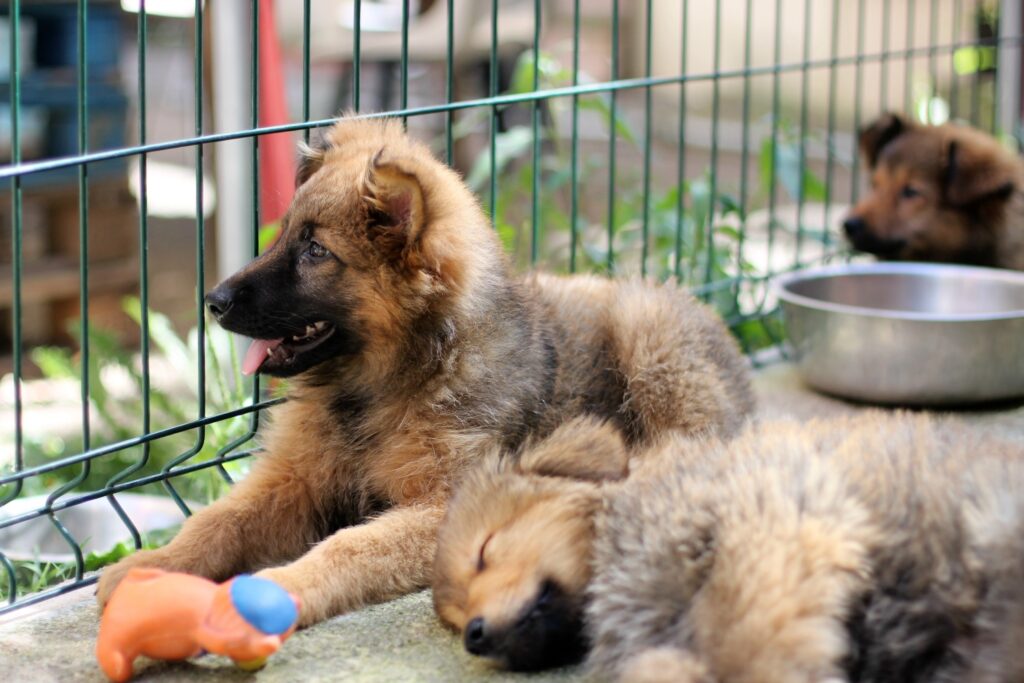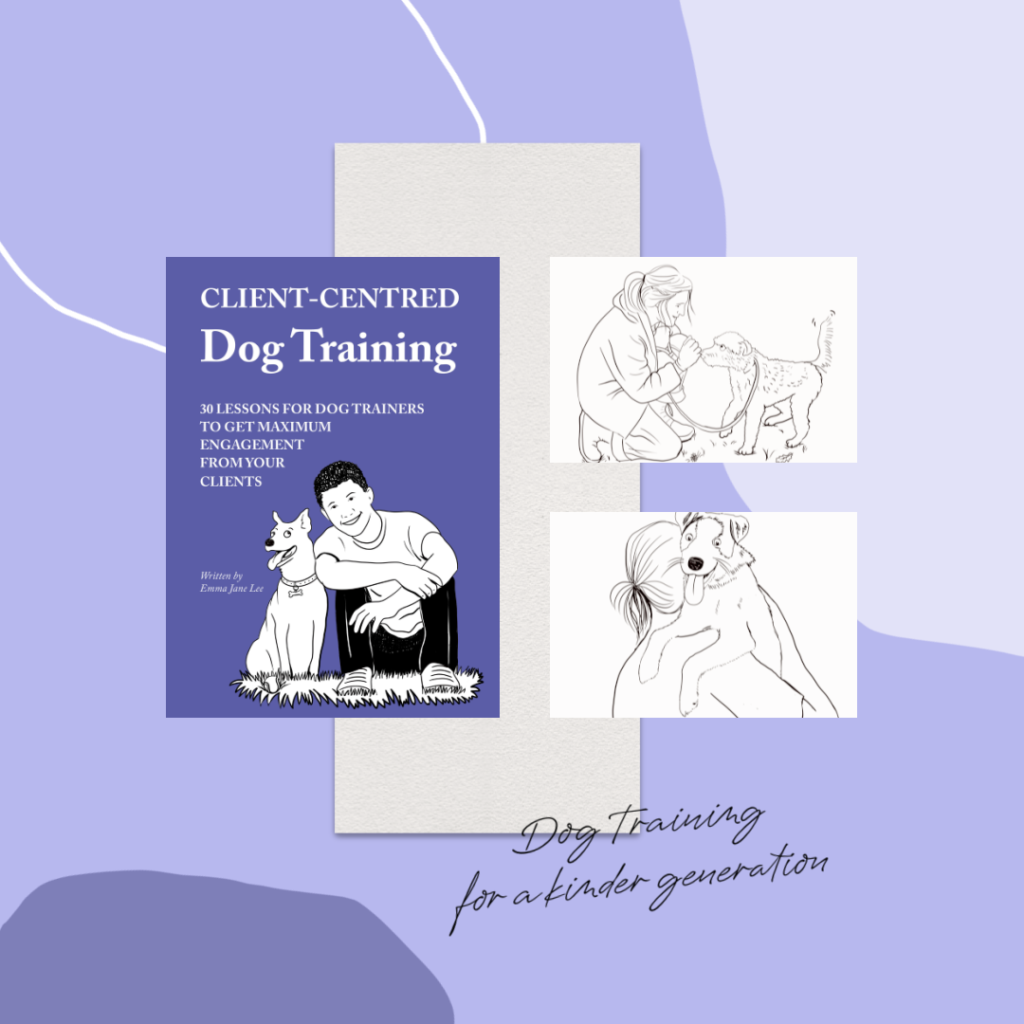In the past three posts, I’ve been taking you through some ways that you can use free work. Sarah Fisher championed the use of free work in her animal-centred education. Although it has many uses in terms of exploring preferences and posture in dogs, helping veterinarians, physiotherapists and chiropractors consider the role of undiagnosed musculoskeletal issues in the way dogs move, it is also useful from a behaviour perspective.
You can read my introduction to how I use free work with behaviour here. So far, we’ve looked at using free work to build frustration tolerance and also for noise-sensitive dogs.
Free work can be used retrospectively, once patterns of behaviours have emerged. It can be used as part of a programme to help frustrated dogs learn to cope without immediate gratification and it can smooth the edges off the negative feelings they have. It teaches them to persevere and it builds resilience.
Free work can also be used retrospectively with noise sensitivity, helping desensitise dogs to noises. For dogs who are nervous around things that make noise, you can use free work to build in control and safety so that the dog feels comfortable exploring situations that might make noise.
Wouldn’t it be great if free work could be used proactively though? Couldn’t we use free work to teach puppies how to build the skills they will need to cope with life right from the beginning?
Free work can be an incredibly useful add-on for puppy guardians and puppy classes. It can help build crucial life skills that help them cope with absence, that foster independence and that build optimism, tenacity and resilience whilst helping puppies learn how to cope with disappointment, delay and distraction.
It can be used to help them learn to cope with absence and to structure the young dog as they learn to be independent. It can help them learn how to navigate the world without fearfulness or nervousness.
It also teaches the guardian about their puppy. It helps us understand the things our dogs like and the things they don’t. It helps us identify where the puppy will need more support whilst helping them learn. Especially where young puppies are concerned, we shouldn’t be thinking about self-regulation and self-management. Co-regulation, where the guardian scaffolds the puppy’s engagement with the environment and provides structured support as they begin to learn how to self-modulate, is arguably the most important role for a guardian. Certainly, using free work with litters that are still with the breeder or fosterer from 3 weeks to 8 weeks and beyond can help us understand the emerging personalities of young puppies, matching them with the right home, supporting where necessary and helping build behaviours to ensure puppies have the skills to cope with life.
Short, structured bursts of carefully thought-out free work can be central to the development of puppy skills.
#1 Teaching the guardian to observe more
It goes without saying that all free work should be actively supervised. Free work is not a babysitter. The point of free work is for the guardian to gather information and to spend time learning. As you will know from the first post, we can learn about our puppy’s preferences, about the choices they make, about the things the puppy chooses to engage with.
Since puppy development happens in such a short period, it can be easy to miss the genesis of behaviours that will become increasingly problematic, like guarding resources, destruction, frustration or noise sensitivity. Just in one session, the new puppy guardian might be able to see that their puppy struggles to engage with any part of the session and that, potentially, their puppy might become increasingly dependent on the guardian. Another guardian might be able to see that their puppy gives up quickly and doesn’t seem to persevere.
What we observe, we can address in future sessions. Free work demands that we supervise, so that the puppy doesn’t ingest something they shouldn’t, so it’s an ideal time to sit back and let the puppy talk.
If the puppy needs support and cuing, we can do that, bearing in mind that our next session should be simpler.
You wouldn’t think that people need a reason to sit and watch their dogs, but they do. Prompting them to do so and to make videos of sessions helps build up those crucial observation skills that will help us navigate tricky moments in the future.
#2 Scaffolding interruption
The bane of any puppy class is the puppy who won’t or can’t disengage. Some puppy class trainers scaffold the session to avoid this problem, giving puppies a bit of free time at the end of the session to play and leaving it to guardians to interrupt the session, often physically by removing the puppy by coercion.
While managing puppy classes in this way avoids the embarrassment of the tenacious puppy who wants to play and can’t cope when not allowed, it’s a bit of a cheat. What can guardians need more from us than knowing how to interrupt their puppy at the most exciting moment? What can be more important than teaching puppies to cope with the frustrations that come from not getting what they want either temporarily or more permanently? And what can be more important than showing guardians how to manage puppy arousal without relying on coercion?
I can’t think of more important skills.
Sure, there will be those who say, ‘Oh they’re puppies! Let them play!’ or ‘They’re puppies. They can’t cope with this yet.’
So how do puppies learn to interrupt?
It doesn’t happen by magic, that puppies have some switch that happens on their 14-week birthday. Just as we would (or should!) with small children, it’s our duty to help puppies learn these skills. I’d argue that enormous damage is caused because guardians think that emotional regulation happens by magic, that it’ll just grow when the time is right.
Go to Wacky Warehouse or TGI Fridays and then tell me if you’re seeing children who know how to stop when they’re getting aroused, or if you’re seeing parents you wish would help their children and actively teach them. Putting the burden of learning complex self-management skills and social skills onto a puppy is laying the groundwork for a problem teenager who’ll need guidance at one of the worst times to learn.
Before you start free work, having some growing automatic behaviours like the Counting Game or Drop from Chirag Patel will help you interrupt your puppy before you need to.
Because ‘Drop!’ is so carefully scaffolded in Chirag’s videos, it helps the puppies build up slowly to the full behaviour without any force or coercion. It also doesn’t rely on notions of trading, which puppies can very quickly learn means the end of fun.
I’d also be looking at interactive play, especially tug, as ways to teach puppies to disengage when asked.
Starting these skills a few days before you plan on more complex free work sessions will ensure you’ve got some habits building that will enable you to interrupt your puppy.
In true free work, you’d only interrupt if the animal was in danger of ingesting something they shouldn’t or if they were struggling. However, if we use free work thoughtfully as part of a teaching package, interrupting the session a few times can also help you build up recall around distractions as well as teaching puppies that they get more for being interrupted on top of what they already had. It’s win-win for them.
#3 Build independence
Many puppies struggle without guardian assistance and they can develop fearfulness around novel items. Free work can be part of a package to help habituate puppies to novelty.
We walk a fine line with puppies as to the right amount of intervention and independence. Puppies who are used to living a completely unsupervised life can end up frustrated and destructive, responsible for their own fun. This generally isn’t a problem until they grow up and then they can’t be left alone because they do as they like. They also respond poorly to both punishment and reinforcement. These are the dogs we end up labelling as bad mannered, pushy, rude and uncooperative. By the time anyone comes along to even attempt to shape these behaviours, they can decide that they really don’t want anyone intervening in their fun. They may become avoidant of humans, if humans attempt to impose structures or rules on them. They may also struggle to build relationships with humans, struggling to build bonds. Sometimes, these dogs go on to develop stereotypies and compulsive behaviours, dependent as they are on meeting their own needs and unused to looking to others for support or comfort. I’m going to stop here before I end up describing myself as this sounds maddeningly like me. Still, my family fostered independence and I do rely on them when I need them. I’m not a complete sociopath.
On the other side, puppies who are completely dependent on us and who have no idea what to do without human guidance to help them. They are unable to cope alone, not knowing what to do. They may be distressed in our absence and never truly develop a sense of themselves. They are reluctant to explore and show little curiosity when their guardian isn’t there. The guardian is not just a safe haven: the bond with the guardian becomes a type of prison from which the puppy is unwilling to stray. In many ways, they remain dependent on their guardian, never truly growing up or developing adult skills.
Thus, guardians are left looking for the ‘Goldilocks’ level of independence and attachment to others: not too much independence that the dog isn’t interested in anything the human has to offer, and not too strong an attachment that the dog can’t cope without them. I think, coming back to the fiercely independent description earlier that verged on having me as its poster girl, my family fostered that independence and confidence. They got the Goldilocks bit almost right… I rely on social support when I need to. I guess this is what we hope our teaching of our puppies is like: they rely on social support when they need it, but they’re confident and independent on the whole.
Free work for puppies can help scaffold independence, encouraging puppies to explore, but also providing a safe and risk-free environment in which to do that. It teaches dogs confidence, but it also gives them parameters that are established by the guardian.
#4 Develop self-occupation skills
Many young dogs have little idea of what to do when left alone and not given specific occupation. I think of myself here again, and how I’m not particularly good with time off. I’ve not had a holiday in ten years or so and I don’t think I’ve had much even by way of a weekend off here and there. Doing nothing is not my style. Do I know how to occupy myself? SO well… I might flick through a gazillion YouTube videos, music videos, photos, pick up my knitting, start learning something, read a book, garden. I’m never bored with my own company. Lockdown was just fine for me.
For others who are highly dependent on others to make their entertainment, I imagine lockdown was tough. I also think that being an adult who was taught how to entertain myself made it easy to cope with having to do so. This is not true of children. Child me couldn’t have coped with months of having to keep myself busy without social support.
Puppies are at the first step in the ladder of learning how to cope alone. They need support and they need structure. They need management, but they also need teaching. We need to teach dogs how to cope in our absence and not destroy our stuff, pull the sofa apart for kicks, learn out how to work locks and open doors then go off and gad about the neighbourhood.
These skills are not innate. They are taught. They are shaped and nurtured.
Free work allows you to scaffold your puppy’s first attempts to entertain themselves with sanctioned items provided for them. At the end of free work, there comes a time when the food has thinned out and there’s little left to investigate. Being able to shape those moments when your puppy lies down and settles calmly of their own volition and gradually stretch them out, you’re shaping appropriate choices and you’re shaping settles. Combining this with interruptions and returns to the free work area also helps you build skills that will help you intervene.
You may find that things like chews or longer feeding toys that can’t be consumed quickly lend themselves to structured settling, where the puppy takes the chew and goes to lie down. Having observed thousands of hours of free work sessions with both puppies and adult dogs, I’d say that dogs often choose to leave such things until last, as if they know well which will take them more time or need them to lie down. The good thing about those moments is the dogs often disengage voluntarily and settle down fora short nap. The aim of puppy free work shouldn’t be to tire puppies out mentally, but even so, it’s not unusual to find feeding sessions followed by sleeping sessions. That’s how the body is designed. Use that knowledge.
#5 Habituate puppies to noises
As you may have read in the last post, you can use free work with noise sensitive dogs. By using the same strategies, you can also help puppies build up tolerance for noises. Gradually including noisy toys, noisy fabrics and noisy surfaces can help dogs build up to real-life experiences like walking on gravel. You can also help them learn to cope with household noises by pairing up washing machines or distant vacuum cleaners with free work sessions, as long as you make sure there are plenty of sessions where puppies are free from coping with them. It’s also an ideal way to build up noise tolerance outside the home. A few outdoor sessions while there is traffic, pedestrian noise or even aircraft noise should help your puppy develop great skills.
#6 Teach puppies perseverence
Guardians have another Goldilocks task ahead of them with puppies: finding the right balance of perseverence. On the one hand, we want puppies to learn to keep going. On the other, we don’t want them to become so fixated that they can’t leave something alone.
Thoughtful free work can help with that.
Firstly, it teaches puppies to keep going if you include one or two toys that are more challenging. You can also help them regulate by interrupting sessions, moving the puppy away, and then revisiting things. Knowing that quitting can be rewarding can be a very useful skill. By including unfamiliar items, things that smell of other animals or people, unwashed clothing or towels from family members, neighbours and friends, you can build up olfactory activities around human and animal smells that will help introduce them gradually to unfamiliar smells. This builds their natural curiosity and engagement with the world.
#7 Reinforce puppies through buffering
Buffering is a concept from Early Years education and parenting. Basically, guardians buffer unpleasant or challenging experiences, helping youngsters cope better. You know how it is when you are small: having a parental figure with you helps you do all the scary stuff. As you age, your social group becomes more important, and I don’t think there are many of us who wouldn’t call on a friend to help us cope with a stressful situation.
Yet research suggests that it might actually be better for children to experience mildly aversive situations without their guardian and then to be rewarded by their guardian’s presence afterwards. The same may well be true of other animals than us. Having an adult figure present all the time through life’s minor unpleasant experiences may not actually help us cope better. What might be more successful is experiencing mildly aversive situations like frustration or dissatisfaction, and instead of being rescued immediately by a parent, working through it and then being able to return to the parent later.
Certainly my own anecdotal experience with dogs supports this. Having met many fearful hounds who rely on the pack as a kind of barrier to interacting with humans, they can let the other dogs do all of the social heavy lifting and never truly develop their own skills. They become very reliant on the group. Bonded dogs may well have similar behaviour patterns underneath their dependence on one another. It’s not psychologically healthy for this to happen, and what can be more useful is for dogs to face mildly challenging situations, cope with them and then be rewarded by returning to the group. Our lives work the same way. Think of those stressful days you’ve had where you ended up nailing it, and you rush home to celebrate with your friends or family.
Of course, we don’t want our dogs to face unpleasant situations, but including some small degree of challenge and removing yourself to a distance or behind a barrier can help your puppy learn to triumph, and then you’re there to add to their relief and joy afterwards. What could be better than the mild challenge provided by the right free work session?
#8 Teach early proprioception
I think we forget that young muscles are learning. Having seen a 7 year old dog try to jump a ditch and fall right in, compared to his friend who’d been jumping ditches all his life, we should remember that muscle coordination, balance and awareness of our own bodies is a learned skill. Of course, we want to do this in ways that promote and support healthy bodies, not by encouraging our puppies to leap ditches.
Including free work that has balance pods, BOSU pads, inflatable ‘peanut’ style physiotherapy cushions, wobble boards, appropriately stepped surfaces, narrow balance beams and things your puppies can climb over, squeeze under, get into or walk on can help them habituate to unfamiliar surfaces but also learn muscle skills that will pay dividends in later life.
Incorporating yoga bricks and blocks, non-slip aerobic steps, wobble boards, inflatable wedges, balance pads and balance pods that your puppies have to navigate can help them build up skills with surfaces. Make sure you check with your vet if you’re going to do anything that would stretch young muscles. The aim is not to exercise but to provide puppies with the kind of unstable surfaces that they’ll come across in life as well as tools you can use to help develop or strengthen muscles later.
#9 Build up gradually
The biggest mistake trainers and guardians make is that they make it too hard. Instead of starting with a ball pit or ball tent absolutely filled with balls and including one or two floury treats, it’s better to start with two or three balls and lots of high value treats so they are scaffolded in their first attempt. After that, they’ll know what to do. You want things to be fun, not the Krypton Factor.
#10 Make it portable
One of the biggests gifts to sensitive, emotional, noisy, hormonal teenagers who can’t cope with the world is Steve Mann’s Rucksack Walk. I’m not going to tell you how to do that if you don’t know: his books are less than the price of some coffee-house coffees. The Rucksack Walk can easily be blended with some of your puppy’s favourite free work activities and it helps build up calm skills in the outside world so that your puppy can take the world in without feeling the compulsion to engage with every single thing that moves.
A rucksack walk every day and two very short free work sessions, and you’ll have gone a long way to helping build a dog who can cope with the world.
In the final post, I’ll be looking at using free work with fearful dogs. Don’t forget to sign up if you want these delivered to your email inbox.
If you’re a dog trainer, feel free to pick up a copy of my book. I think it’s pretty good, but don’t take my word for it. If you have read it already, could I trouble you to leave me a review? It all helps others decide if it’s something worth buying.

